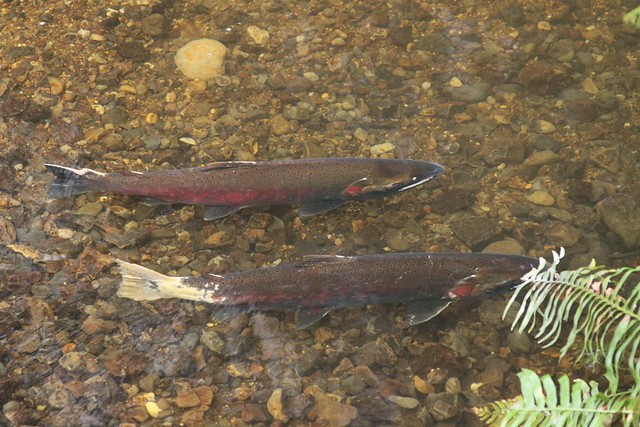This clip would be hyperbole if the article was based anywhere else but from Michigan, which along with it’s Wisconsin neighbor has been ripping up beaver dams to save trout (!) since the dawn of time and insisting the research telling them not to doesn’t apply to them because their streams are ‘special’. Maybe doing their own research will make a difference?
Outdoors: Beaver dams deserve second look by anglers
“Angler groups are under heavy impressions that beavers are the main causes for sediment contribution into the river channel,” said Huron Pines watershed coordinator John Bailey, who gets plenty of pressure from fishermen for beaver dam removal.
Still anglers persist in the quest for beaver dam removal. Finally, in an attempt to settle the question, the University of Michigan did a study on the west branch of the Maple River — a 16-mile tributary in Emmet County. A large population of naturally reproducing brook trout and local concern about beavers made it the perfect locale.
The scientists hypothesized that if beavers were causing excess sedimentation, it would affect both water quality and macroinvertebrate (aquatic insect) abundance.
To their surprise, water quality wasn’t significantly lower above dams nor was water temperature significantly greater above dams. Rather, dissolved oxygen levels and water temperature were stable above and below dams.
Dams did affect tasty trout treats such as mayflies, stone flies and trichos, though not in ways the researchers expected. There were more of these below the dams than above.
Stable water temperatures and dissolved oxygen levels meant that trout weren’t negatively affected. The shift in macroinvertebrate communities above and below dams did result in a change in available food sources for trout.
However, since trout have a highly variable diet, and they will generally consume any available food sources, the shift in community didn’t necessarily limit feeding.
In fact, hexagenia limbata — the large, burrowing mayfly larvae — prefers to dwell in the silt bottom that results from the damming process. (The hex hatch is an annual legendary fish phenomenon. Hex hunger generates more trout titillation and tourism than any other aquatic event.)
“Look for active dams with signs of use. If a beaver dam is large and old enough to have created a substantial pool of deep water, it just might be a brook trout bonanza.”
Michigan is shocked, SHOCKED I tell you, to learn that dissolved oxygen behaves in their state exactly like it does in every other state. Next thing you know someone will be suggesting that gravity works the same way too!!! In the mean time, they’ve contented themselves with the discovery that beaver dams actually improve invertebrate conditions and that this might be good news for the fish that eat them.
Ya think?










































